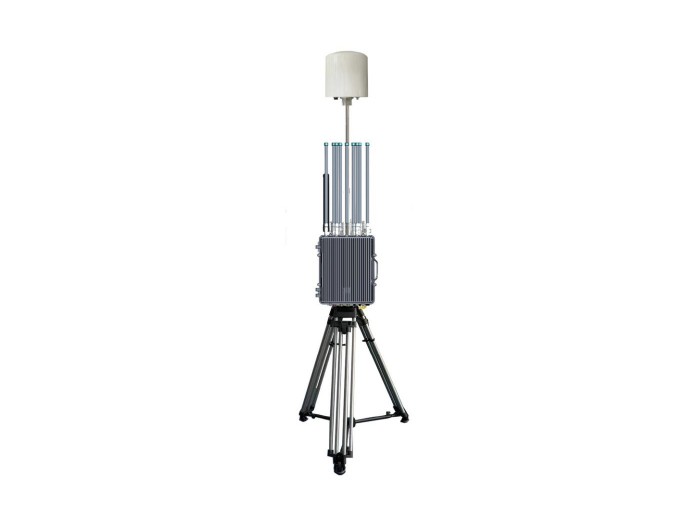Unmanned Aerial Vehicle Trackers: The Future of Military Surveillance
Imagine a scenario where you are managing a military operation with several unmanned aerial vehicles (UAVs) deployed for reconnaissance. The potential for lost communication or misidentification of UAVs in the field can create severe risks. With sophisticated technology like unmanned aerial vehicle trackers, military personnel can efficiently monitor UAV flights, enhancing operational safety and effectiveness. This article explores the importance, benefits, and applications of military UAV trackers to provide solutions for your complex operational needs.
1. Understanding Unmanned Aerial Vehicle Trackers
Unmanned Aerial Vehicle (UAV) trackers are essential tools used by the military to provide real-time location tracking, status information, and operational analytics for UAVs. They are equipped with global positioning systems (GPS) and communication technologies that allow for continuous monitoring during missions. This capability has become increasingly vital, especially given the rising sophistication of drone warfare and threats posed by adversaries who might employ counter-drone strategies.
A 2023 report by the Pentagon indicated that the military budget for UAV technologies is expected to reach $11.7 billion by 2025, reflecting a significant operational shift toward enhancing drone capabilities. UAV trackers can range from simple GPS-based systems to complex integrated systems that involve sensors, databases, and advanced algorithms for predictive analysis. With improved tracking, military commanders can make more informed strategic decisions, optimizing resource allocation and minimizing risks.
Key Features of Military UAV Trackers
Military UAV trackers offer a range of essential features such as:
- Real-time Tracking: Provides ongoing location updates and enables quick responses in dynamic environments.
- Mission Planning Assistance: Tracks UAVs during missions, allowing for better planning based on previous flight data.
- Integration with Command Systems: Seamlessly connects to operational command protocols for enhanced situational awareness.
- Remote Monitoring: Permits remote access to UAV data, allowing commanders and analysts to monitor missions from different locations.
- Advanced Analytics: Uses data analysis for evaluating flight paths, optimizing UAV use, and enhancing future missions.
2. The Benefits of Using UAV Trackers in Military Operations
The integration of UAV trackers into military operations presents numerous advantages that can redefine mission success rates:
- Increased Safety: Constant monitoring translates to reduced risks of UAV malfunctions or getting lost, resulting in enhanced mission safety.
- Enhanced Coordination: With live tracking data, troop movements can be synchronized more effectively, reducing the likelihood of friendly fire incidents.
- Data-Driven Decisions: Commanders can leverage collected data for future mission planning, leading to improved operational tactics.
- Countermeasures Against Threats: Knowing the exact location of UAVs allows for deploying countermeasures swiftly against potential threats from enemy UAVs.
- Cost Efficiency: By minimizing loss of drones and enhancing their operational lifespan, military organizations can cut down on costs significantly.
3. Applications of UAV Trackers in Different Military Scenarios
UAV trackers can be applied across various military operations, demonstrating their versatility and necessity. Here are a few scenarios where UAV trackers have proven beneficial:
Reconnaissance Missions

In reconnaissance missions, UAVs gather vital intelligence by surveying enemy positions. The UAV tracker ensures that the UAV remains within its designated airspace, continuously streaming data back to the command center. This capability greatly increases the safety of aerial reconnaissance and minimizes the chance of miscommunication.
Counter-Terrorism Operations
During counter-terrorism operations, precise intelligence is paramount. By utilizing UAV trackers, military personnel can maintain real-time data on UAV fleets, assisting in the evaluation of high-risk targets and confirming mission success rates. This data contributes to strategic decision-making and heightened situational awareness.
Training Exercises
In training simulations, UAV trackers serve as critical components for analyzing pilot performance and operational efficiency. By evaluating metrics such as flight paths and response times, military trainers can offer targeted feedback to UAV operators, ultimately refining overall mission effectiveness.
4. Emerging Trends in UAV Tracking Technology for Military Use
As technology evolves, several emerging trends reflect the future of UAV tracking systems in military operations:
Artificial Intelligence Integration
With the integration of AI, UAV trackers are beginning to analyze flight data patterns autonomously, helping military personnel make proactive operational adjustments. AI-driven insights can predict potential threats or required UAV adjustments in real time, thereby enhancing mission effectiveness.
Cybersecurity Measures
As UAV tracking systems rely heavily on digital communications, there is a heightened focus on cybersecurity to prevent hacking and data breaches. This has led to the development of more robust encryption techniques and secure networks to safeguard critical mission information.
Cooperative Systems
Emerging cooperative tracking systems enable multiple UAVs to communicate with each other, sharing data and enhancing coordinated mission efforts. This teamwork fosters efficiency, especially in large-scale operations where several UAVs accompany each other.
Key Takeaways for Military Drone Tracking Solutions
- Invest in advanced UAV tracking systems to enhance operational efficiency and safety.
- Regularly train personnel to maximize the benefits of UAV tracking technology.
- Stay updated on emerging military UAV tracking trends to maintain a competitive edge.
- Consider cybersecurity measures as a critical component when implementing UAV trackers.
- Contact us for a professional consultation to find the right UAV tracking solutions for your specific military needs.
Conclusion
Unmanned aerial vehicle trackers play a pivotal role in modern militaristic operations by ensuring safety, efficiency, and mission success. As the military industry continues to evolve, our expertise aligns closely with the demands of advanced UAV applications. If your organization is ready to enhance operational effectiveness through cutting-edge UAV tracking, visit our website now or contact us for a free consultation!
This article provides an extensive overview of military UAV trackers, addressing key features, benefits, and applications while offering actionable insights and a clear call-to-action. It is designed to attract potential customers, improve SEO rankings, and reinforce brand authority.















